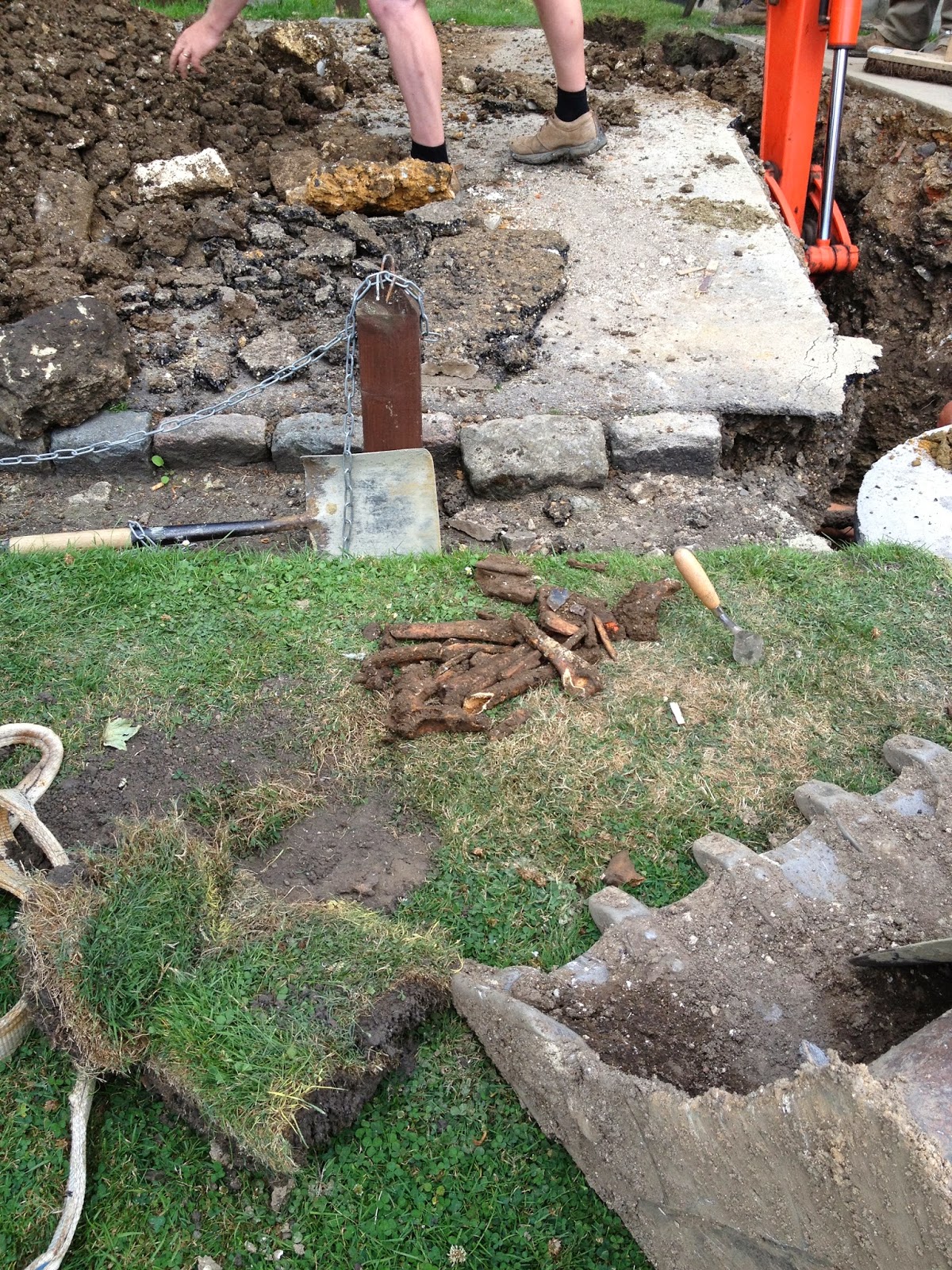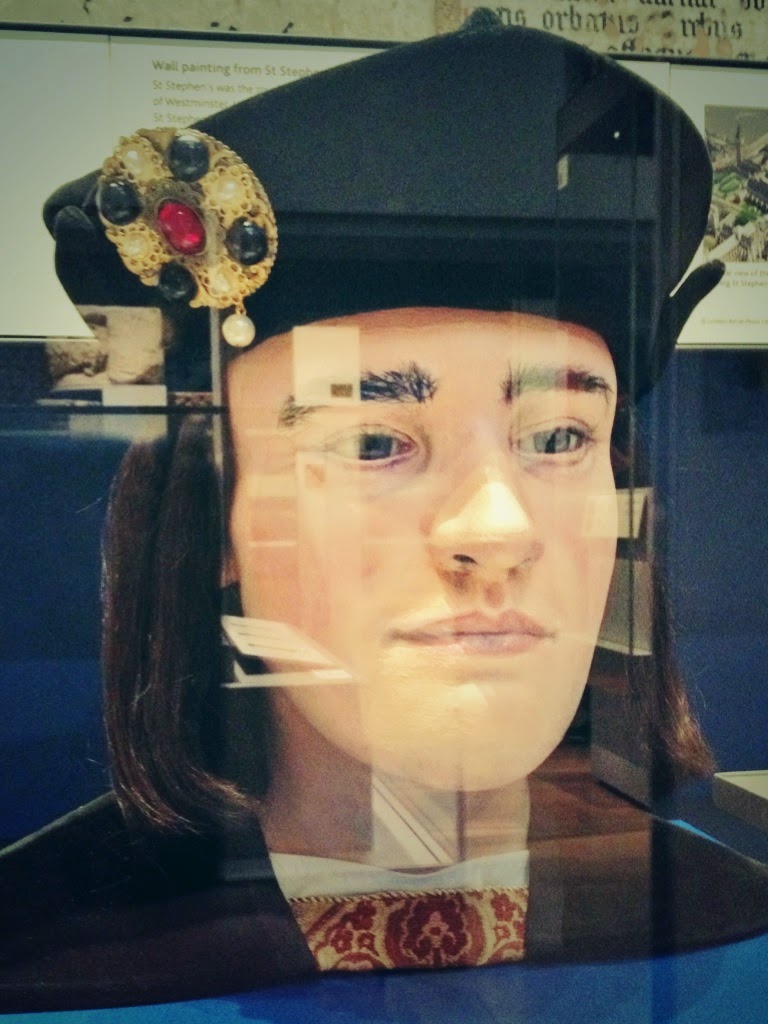Continuing my adventures at
Rochester cathedral.
It is hardly on the scale of the
fantastic find in Leicester of the earthly remains of King Richard III, but
mysterious bones have been uncovered at Rochester Cathedral.
 |
| The excavation site |
A Heritage Lottery grant, along
with privately raised funds, is currently providing the finance for a new
project to renovate the crypt at Rochester.
At the moment the crypt is an empty, echoing space with a couple of chapels, one enclosed behind glass and impressive wrought ironwork, but it feels very much a utilitarian part of the cathedral, made more so by the small kitchenette in one corner to provide teas
for the choir between practice and services.
The project intends to breathe new life into the somewhat dark and dingy
area and transform it into a permanent exhibition space with new displays including the unique and extremely valuable Textus Roffensis. More on that next week.
Part of these works has involved
digging a trench outside the crypt on the north side of the cathedral,
alongside the presbytery. This is to
enable more toilets to be built and connected to the sewer system. So far, so suitably undignified. During these excavation works the contractors
came upon a large number of bones, an event which was entirely unexpected. According to the, albeit sketchy, records for
the cathedral, there are not supposed to be burials here. There is a lay cemetery on the north side stretching
from the nave transept to the west front along the length of the nave, and it was
thought that the monastic burial ground was closer to this.
The bones could be monastic, the
bodies of the monks who lived and served at the cathedral over the
centuries. They could also be lay
people, those who lived in the town and were suitably wealthy to be interred so
close to the cathedral. Unless
substantial complete skeletons are recovered, which I do not believe to be the
case, it will probably be impossible to tell.
A full skeleton, or near complete set of bones can tell you how the
person lived, diseases they may have suffered from and analysis of their bones
and teeth can show the kind of diet they would have had.
 |
| The shadow of Richard III |
The fragments that I saw being
removed from the trench are small and broken.
They will never be identified and, even as anonymous fragments, they
will be treated with the utmost dignity fully in compliance with Church of
England advice. I wonder that a handful
of unnamed bones of indeterminate age and sex will receive more tender care
than a king who still resides in a cardboard box in a lab.
I was told by the contractors on
the site that as they uncovered the bones they were put to one side and when an
appreciable amount was collected the clergy would come out of the cathedral in
full regalia to reclaim them and take them back into the cathedral. I don't know where they all are now, however,
what I do know is that they will all be reinterred as close as possible to
where they were found, the same place if possible and in the presence of the
clergy. Some have already been laid back
to rest, their ground not earmarked for more interference, but there are some
still waiting to be returned once the building work has been completed.
 |
| Monk, or merchant? |
The discovery of the bones of
Richard III in 2012 has caused a great many people to re-evaluate how they feel
about the disturbance of a grave, certainly not least myself. I studied archaeology and digging up bones
was part and parcel of investigating barrows and burial pits, cists and
sarcophagi. But it is so easy to lose
sight of them as people. Richard III
brought that message crashing down on us - you put a name to the bones and
suddenly they become a flesh and blood person with thoughts, feelings and
family. These bones were people,
merchants maybe, seamstresses, inn keepers, squires, sailors, monks. We will probably never know for sure unless
we find a document stating who was buried here but we can be fairly certain
that they were all loved and cherished to be where they were. They were disturbed by accident, not from
some pre-planned excavation looking to retrieve them. Somehow that makes a difference. It is less mercenary. And it does seem rather fitting that they
were discovered during a project to bring better understanding of the cathedral
and its place in the world to a wider audience.
By finding a new burial site we have furthered our knowledge of the
cathedral and its wider community.

No comments:
Post a Comment